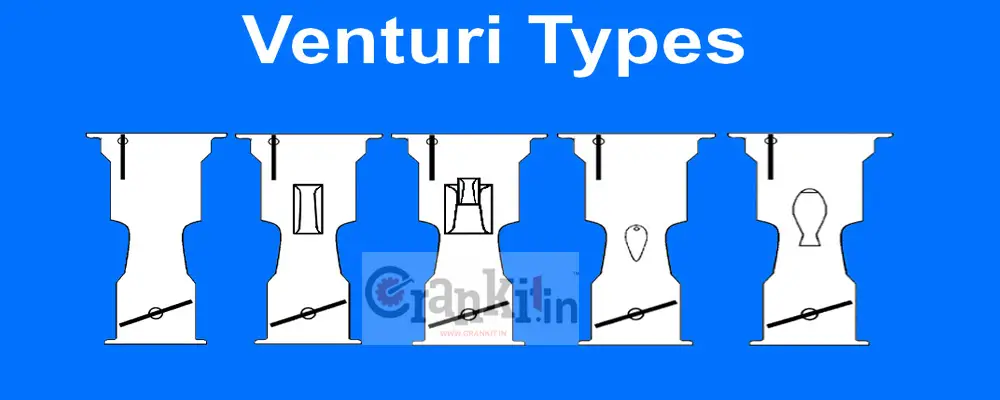What is a Carburettor Venturi?
Carburettor venturi is a ’tube or passage’ that decreases considerably. It is narrower at the center and thru’ which the air must pass. As the same amount of air must pass thru’ this tube, its velocity or speed is greatest at the narrowest point of the tube. If you reduce this area, even more, the velocity of the air increases. As a result, it proportionately increases the suction of fuel.
The opening of the fuel discharge jet is typically located where the suction is greatest. It is, generally, just below the narrowest section of the venturi tube. The vaporized gasoline sprayed thru’ the fuel jet mixes with the air entering thru’ the carburetor venturi tube in the mixing chamber located below the discharge jet. This produces a combustible mixture that passes thru’ the inlet manifold into the engine cylinders.
Carburettor Venturi and vaporization:
While the carburettor atomizes most of the fuel in the mixing chamber, it vaporizes only a small part of the fuel. The amount of fuel vaporized depends upon the nature of the fuel, the temperature of the air, fuel and engine parts, the amount of suction created above the fuel jet and the degree to which the fuel is broken up or atomized. The process of vaporization of the air-fuel mixture is usually NOT complete until the end of the compression stroke. The system continues to vaporize the fuel right until the end of the compression stroke of the petrol engine.
Types of Carburettor Venturies: How Venturi type affects the carburettor’s performance
There are many types of carburettor venturies depending upon their application. The carburettor designs vary according to the type and the number of venturies they employ. Besides, each of these designs provides decreased pressure which draws more fuel from the discharge jet. This creates a vacuum or negative pressure which helps in vaporization. Multiple carburettor venturies help in keeping the fuel away from the carburettor walls which reduces condensation.
Following are the types of venturies employed in a carburettor:
1. Plain or Single Carburettor Venturi-
This type of carburettor venturi is known as ‘Plain or Single’ venturi. It employs only the Single venturi which acts as the main venturi thru’ which the air passes to the engine intake manifold.
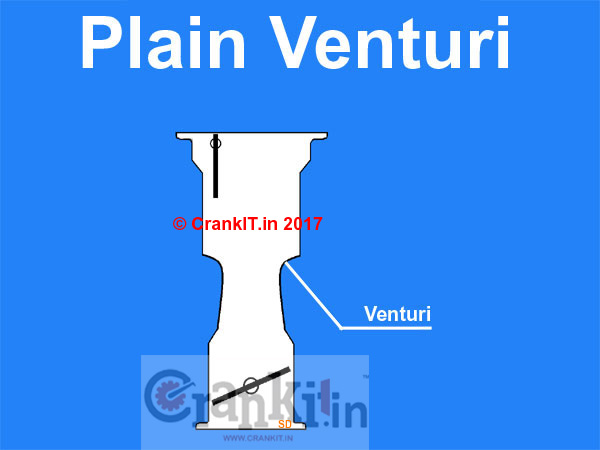
Thus, ‘Plain’ Venturi carburettor uses fixed venturi. In which, the varying air velocity alters the fuel flow. Most carburettors in cars and bike use this type of design.
2. Double Carburettor Venturi-
The carburettor with this design has two venturies. One is main carburettor venturi and the other is primary or boost venturi. Thru’ which, the air has to pass to the intake manifold.
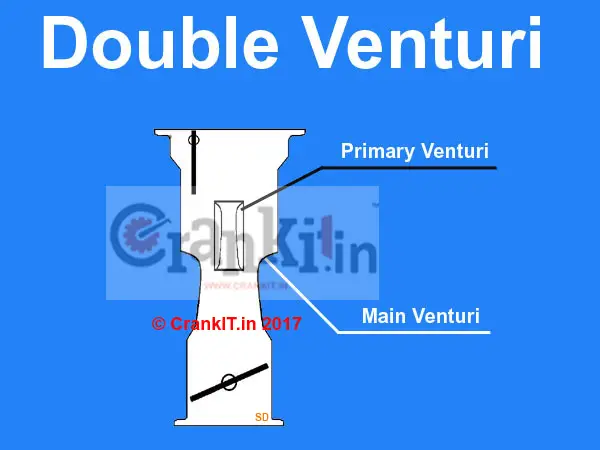
This results in better vaporization and atomization. It also provides more control of fuel entering the air stream. Its performance is more refined than the ‘Plain / Single’ Venturi carburettor.
3. Triple Carburettor Venturi-
This design employs three carburettor venturies. Apart from the main venturi, there is a primary venturi and also a secondary venturi. Even, more control and atomization occurs with a triple venturi design.
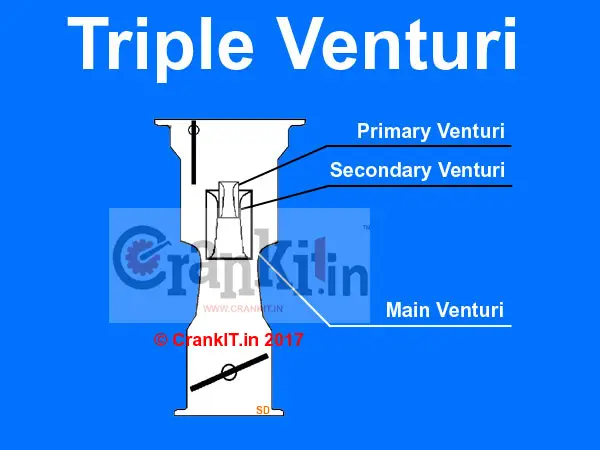
Furthermore, the discharge tube feeds fuel into the smallest venturi for maximum control and atomization. Thus, it further refines the performance than the ‘Single’ and ‘Double’ venturi carburettors.
4. Vane Carburettor Venturi-
The Vane venturi employs a vane or a blade. Moreover, it is attached to a rotating axis which is pushed by the incoming air. It further helps in reducing the air pressure. And thus, increases the vacuum or negative pressure.

Additionally, vane type carburettor venturi varies the venturi area of a carburettor corresponding to the opening of a throttle valve. Thereby, it enhances the injection of fuel and air-fuel ratio.
5. Nozzle Bar Carburettor Venturi-
This design is more like the ‘Plain or Single’ venturi with a fuel jet nozzle embedded into it. The nozzle sprays fuel into the incoming air depending upon the opening of the throttle.
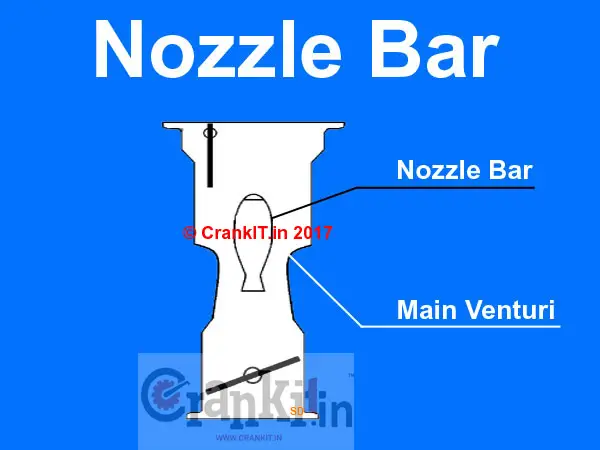
In addition, the Nozzle Bar provides a discharge nozzle which distributes the fuel so that the carburettor can break it up into smaller particles. Furthermore, this forms a more homogenous air-fuel mixture that requires less fuel for maximum engine performance.
6. Variable Carburettor Venturi-
However, some carburettors have changing or variable carburettor venturi. A variable venturi increases its size according to engine’s demands. As the driver presses the throttle pedal, the venturi size increases while it decreases when the throttle pedal is released. Thus, airflow speed through the carburettor venturi and the resulting pressure difference remains constant. Hence, a variable venturi carburettor is also known as a constant velocity carburettor or a constant depression (vacuum) carburettor.
For more information, please click here:
http://www.mikuni.com/fs-carburetor.html
Read more: How a Simple Carburetor Works?>>
